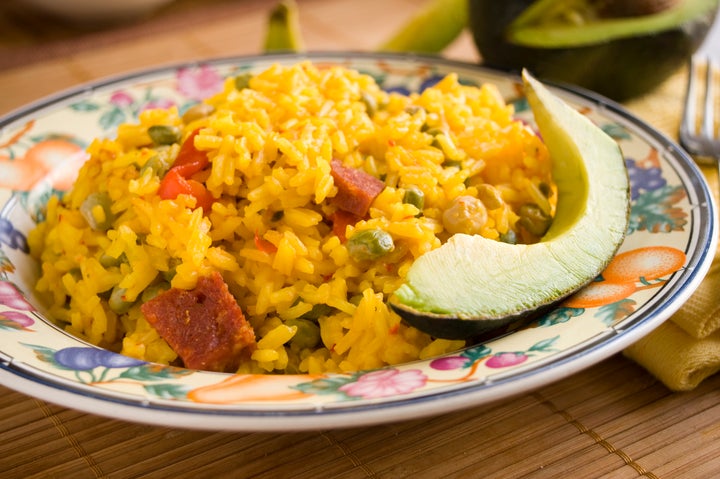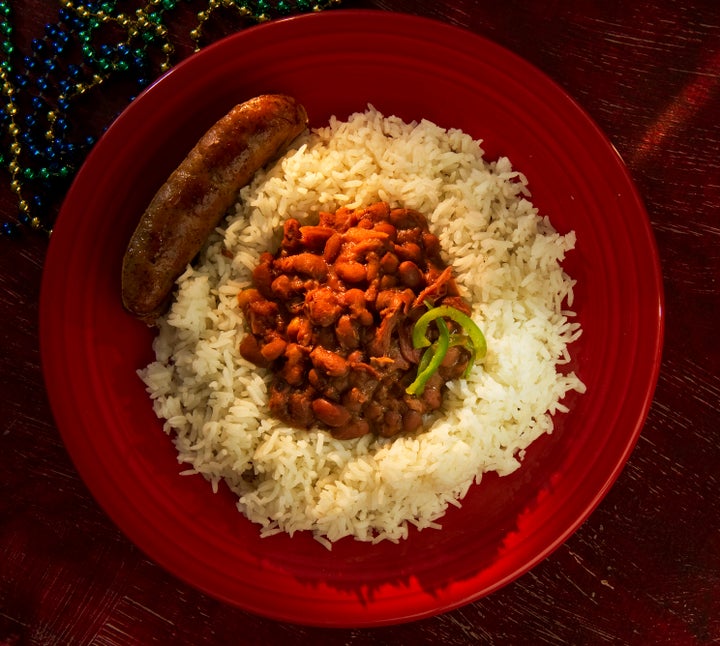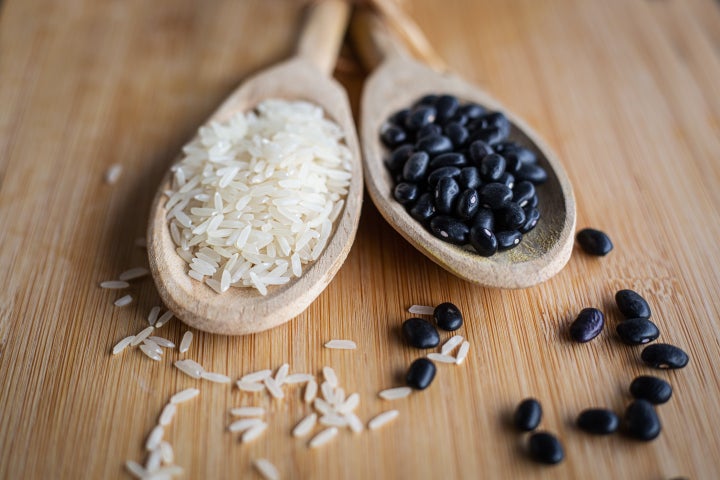Basic cooking is a great way to de-stress, and preparing rice and beans is as basic as it gets. But what makes this humble dish a global staple, especially in the Americas and Africa, is its inherent nutritive value for its low cost. Just one cup of beans and rice provides 12 grams of complete protein, 10 grams of fiber and loads of essential vitamins and minerals recommended by the U.S. Department of Agriculture, including B-6, vitamin E, phosphorus, calcium, magnesium and potassium.
Although the domestication of rice and beans happened thousands of years ago in China, Peru and Mexico, the pairing has been rooted in Latin and African cultures for centuries. Regional dishes developed over time, and in some cases came to represent the country from which they came.

For example, the flavourful arroz con gandules (rice and pigeon peas), characterised by sofrito (a paste made out of cilantro, onions, garlic, peppers and tomato) is part of Puerto Rico’s national cuisine, but red beans and rice is synonymous with Louisiana’s Creole cuisine. Whether you’re considering short, medium or long grain rice, or the commonly used pinto, black or kidney beans, the flavourings you choose can elevate rice and bean cookery to a gastronomic experience.
It’s a cost-effective meal
Overall, rice and beans are a cheap source of protein. The average cost to make a one-cup serving of rice and beans at home is just 49 cents.
Dried beans are priced at $1.99 per pound and yield 16 half-cup servings. Canned beans, which are a bit more pricey, cost around $1.19 for 15 ounces and yield four cooked half-cup servings.

Rice can go a long way for its price, too. White, long grain rice, common in rice and bean dishes, averages about $3.30 per pound, yielding six cups of cooked rice, or 12 servings.
Together, rice and beans are nutritional magic
Rice and beans, when served together, contain all nine essential amino acids to form a complete source of protein. Both brown and white rice are low in the essential amino acid lysine, but high in the essential amino acid methionine. Beans are the opposite ― high in lysine but low in methionine, explained registered dietician nutritionist Jillian Kubala. Combining rice and beans allows you to get enough of each, as well as the remaining seven essential amino acids, forming a complete protein.
However, not all rice is the same. Whole grain rice, traditionally used in African and Latin American cuisine, contains important antioxidants, including essential B vitamins, calcium and iron, unlike white rice, which is stripped of many of its nutrients through processing. In cooking rice and beans, long grain rice is preferable due to its light, dry texture. Short or medium grains, which have a tendency to clump together when cooked, are better suited for sushi and risotto-type dishes.

Canned beans vs. dried
Nutritionally, both dried and canned beans are equally packed with vitamins and nutrients. However, there are a few differences to consider, including prep time and salt content. Although canned beans cost more, their convenience is attractive, because dried beans often require long soak times.
Canned beans, however, have their own issues, including high salt content and the possible presence of can liners containing BPA, a chemical that some studies show can interfere with thyroid and reproductive function in both men and women, Kubala said.
Some canned beans contain up to 500 mg of sodium per half-cup serving (the USDA recommends limiting your sodium consumption to 2,300 mg daily). An easy fix? “Look for no-salt and BPA-free varieties; rinsing your beans will further reduce the sodium content by about one third,” Kubala suggested.
Some cooking tips
If you’re short on time but only have dried beans, try the quick soak method I learned while training at the Natural Gourmet Center; the soaking liquid further enhances the flavour of the beans.
- Place beans in a pot with water according to recipe. Bring to a boil, reduce heat and simmer for 1 to 3 minutes; skim any foam that forms on the surface of the water while boiling. Turn off heat, cover with lid and let sit for one hour. Using the same soaking liquid, proceed with recipe for cooking the beans.
When cooking rice, Kelvin Fernandez, a chef and culinary instructor at the Institute for Culinary Education, told HuffPost he recommends adding aromatics to infuse flavour in the rice, which can be bland on its own. Fernandez adds fresh herbs (rosemary, thyme, sage) or dried herbs (bay or lime leaves, lemongrass, cilantro) to the cooking water and brings it to a boil before adding the rice. “I use large pieces of aromatics to infuse flavour, that way, they can be removed easily after the cooking is complete,” he said.
For more information, check out the Old Ways Nutritional Exchange chart to find out how long to soak and cook every type of dried bean. And if you need help with seasoning, check out cook Kathleen Flinn’s guide to seasonings that add global flavour to rice and beans.